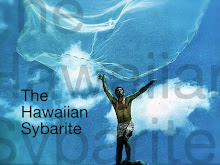
Kabocha (カボチャ) is one of the great culinary pleasures of autumn. For those unfortunate few who remain unacquainted, Kabocha is a smallish, versatile and surprisingly rich Japanese pumpkin.
The name Kabocha itself actually comes from a corruption of the word Cambodia, the pumpkin having arrived in Japan from that country courtesy of Portuguese sailors in 1541. Kabocha then traveled to Hawaiʻi with Japanese immigrants from the southern prefectures of Japan—mostly southern Honshū (本州) and Hiroshima, Yamaguchi, Kumamoto and Fukuoka on Kyūshū (九州), where Kabocha (かぼちゃ) was known by its alternate name, Bobora—Bobora being the Japanese adaptation of the Portuguese word for pumpkin, Abóbora.
Kabocha loves the tropics, and it's established itself across Polynesia. It's especially popular in Tonga, Tahiti and, of course, in Hawaiʻi. Until the Second World War, it was still known by it's regional Japanese name, Bobora, which was also a Hawaiian Pidgin term for a hapless, newly-arrived Japanese immigrant. From the 1950s, the pumpkin has been locally known as Kabocha, coinciding with the period when large-scale importation of Kabocha to Hawaiʻi began, mostly from the United States and Central America.

Local production is still important, however. We recently were witness to an unexpectedly lively discussion amongst local farmers about the multitudinous uses of Kabocha. We're great lovers of tenpura Kabocha, but Kabocha gelato? We had no idea. Thai Kabocha curry? A revelation. Banana-Kabocha-Macadamia bread? As it turns out, an old family favorite.
And as the first installment of a four-part series of local holiday recipes, we're sharing this recipe for Banana-Kabocha-Macadamia bread, a creation, we're told, of the Latter-day Saint colony in Lāʻie, Oʻahu.
click to enlarge

© 2010 The Hawaiian Sybarite


No comments:
Post a Comment